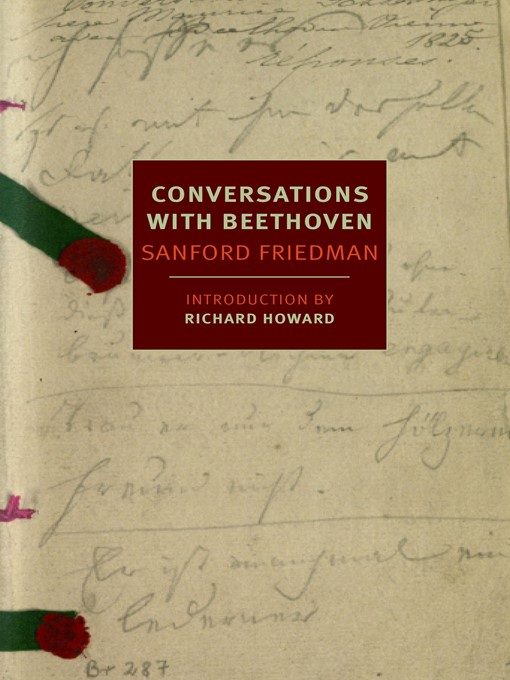
Conversations with Beethoven
NYRB Classics
کتاب های مرتبط
- اطلاعات
- نقد و بررسی
- دیدگاه کاربران
نقد و بررسی

Starred review from July 7, 2014
This novel was the last completed by Friedman (Totempole) before his death in 2010, and a perfect grasp of ebbing mortality, in all its tedium and elusive clarity, informs the depiction of Beethoven’s final year. When the book opens, the composer is already so deaf that friends and family communicate with him largely through pencil and paper; the narrative consists solely of snippets of dialogue. The speakers include Beethoven’s protégé Holz, his despised sister Johanna, and his patronizing brother Johann, while Beethoven remains largely silent, save for a handful of letters. The man that emerges, as though in relief, is a declining and paranoid crank. Initially he is seen trying to protect his troubled nephew Karl from the aftermath of a botched suicide attempt. He goes on to live in near-captivity on his brother’s estate and, increasingly paranoid, enlists a servant’s help in spying on his supposed enemies. Finally, the reader sees the collapse of Beethoven’s health and his agonized attempts to parcel out his estate. The novel’s brilliance lies in the discovery of the flawed human behind immortal genius: Friedman’s Beethoven is just like us.

September 15, 2014
In his final work, Friedman (Totempole), who taught creative writing at Juilliard, captures the months before Ludwig van Beethoven's March 1827 death in a narrative made up of sentence fragments. Near destitute and ill for years, Beethoven was also increasingly deaf before he died and communicated with visitors by responding verbally to queries and remarks they wrote in notebooks. Some of these journals survive, and, along with select letters, serve as the basis of Friedman's novel. Here, as the composer's physical and mental health deteriorate, he becomes paranoid and emotionally manipulative, leaning desperately on friends, doctors, and remaining family yet rejecting them again and again. Central to Beethoven's arduous journey toward death is his relationship with his nephew, a young man trapped within the bottomless needs of his famous uncle. Throughout, the depiction of early 1800s Vienna has a familiar ring, filled as it is with both celebrities and wannabes who sound contemporary. VERDICT Friedman successfully frames a picture of Beethoven's turbulent genius and the conflict that arises from having fame without fortune. Readers interested in the portrayal of such lives may enjoy this fictionalized notebook.--Susanne Wells, Indianapolis P.L.
Copyright 2014 Library Journal, LLC Used with permission.

Starred review from October 1, 2014
Confronted by a furious madman, shouting incomprehensible questions about a missing nephew, the hospital doctor is incredulous: Yousurely you are not the great Beethoven? But it is indeed the great Beethoven who emerges in Friedman's posthumously published novel, daringly conceived as fragmentary exchanges between the aging genius and interlocutors who commit their words to quarto-writing booklets, made necessary by the composer's deafness. These shards of dialogue place considerable interpretive demands on the reader, yet meeting those demands helps readers understand just how hard life was for Beethoven during his last year. Readers see up close how a heroic romantic struggles to wrest from his powerful imagination one last worka proposed oratorio about Saul and Davidwhile battling debilitating illness, painful yet ineffectual medical treatments, financial strains, and arduous travel. Hopes for soaring harmonies incubate beneath Beethoven's haunting memories of his brother's death and his acute awareness of his own bloody sputum and swollen limbs. But nothing distresses Beethoven more than the unpredictableeven suicidalimpulses of the nephew who has become his ward and heir. In Beethoven's mercurial relationship with his ward, readers see exposed the musical artist's deepest vulnerabilities, his most lacerating frustrations. A compelling narrative of a titan's final struggles.(Reprinted with permission of Booklist, copyright 2014, American Library Association.)

























دیدگاه کاربران